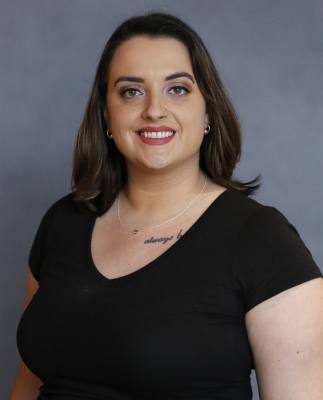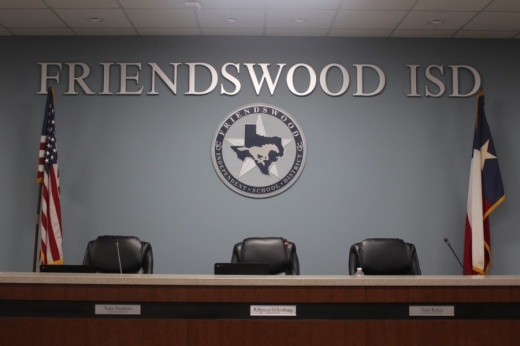Potential changes as presented at a Nov. 9 meeting included creating a more restrictive process for students to be able to learn virtually, adding some at-home learning days for all students to provide teachers with planning time, and adjusting the model for secondary virtual learning. All changes were approved, except for the addition of at-home learning days for elementary students.
After conversations with the district’s elementary principals and Dahria Driskell, executive director of special education, it was determined that at-home days would ultimately not benefit younger learners; teachers wanted more time in person with elementary students, officials said at the meeting.
“Both of these allow for sustainability through the remainder of the year for our teaching staff,” Superintendent Thad Roher said, referring to the two meeting agenda items dealing with remote and asynchronous learning.
All secondary students will have a total of eight asynchronous learning days over the course of the rest of the year under the new approved system. These days will be structured using the same platforms as usual but will be considered at-home days to give teachers necessary planning and preparation time. Initially, the district also proposed adding two at-home days for elementary learners.
“You can expect your kids to be in school while they're at home that day, and there may be a situation where a teacher will want to touch base [synchronously],” Roher said.
At the secondary level, the changes also give instructors more freedom each week to choose which days will be taught synchronously and asynchronously. Teachers will provide a minimum of two synchronous experiences per week with the revised system. These changes are meant to alleviate some of the stress and pressure on teachers trying to juggle virtual and in-person students.
Under the revised virtual learning system, a student with any class averages below a 70—or the equivalent with elementary school progress reports—or a student with at least three unexcused absences would be required to return to in-person instruction. The Texas Education Agency threshold for mandating a return to in-person learning based on missed attendance is a student missing 10% or more of the days in a grading period, Roher said.
The virtual learning revisions are aimed at a specific group of struggling students, Roher said, and the district is “not canceling virtual learning.”
“Virtual learning’s not going anywhere for some time,” Board Vice President David Montz added. “I’ve met some students in my [dental office] who love it, who are excelling in it—and it seems to be working pretty well for some. ... I think we should also highlight and embrace the positives [of virtual learning].”
Before and after the Nov. 9 meeting, parents expressed concerns over how the logistical challenges of virtual learning, which sometimes result in students missing classes or assignments, would affect their students being able to continue learning remotely.
“What I’m more aware of is maybe more user error ... than actual connectivity issues,” Roher said in response to attendance concerns and whether students are all able to connect successfully to virtual platforms.
Technology department officials said the district has handed out 16 Wi-Fi hotspots and has more available for families in need, as well as additional Chromebooks.
Board President Tony Hopkins asked what might happen to a student who has six A’s and one F—the F from forgetting to turn in one major assignment in that class—after a nine-week grading period.
“We have to look at that student and see what the driver of that would b and make that decision at that point in a holistic way versus just laying down the letter of the law,” Roher said.
The changes made, which were driven by changing TEA guidelines, give the district the right to bring students back to campus but leave room for individual assessments. Students can request a transition meeting with relevant FISD educators and officials to initiate more in-depth conversations about their circumstances learning at home.
Academic and attendance standards will be applied to a student’s most recent nine-week grading period. Any student subsequently asked to return to in-person learning has a specific, limited amount of time from the date of notification to appeal the mandate. Appeals begin at the campus level, likely with a principal, assistant principal or campus-based administrator, officials said.
Students can appeal the return to campus for any reason at all, but they are required to provide some sort of reason. The purpose of this is simply to collect data and gain insight into challenges families may be facing, officials emphasized at the meeting.
However, any student in a medically fragile family as designated by the Centers for Disease Control—meaning that the student, or a family member residing in the student's household, is at higher risk for severe illness from COVID-19 due to a specific underlying health condition listed by the CDC—will be allowed to remain virtual regardless of grades. The medical exemption supersedes any mandate for in-person learning, officials said.
The virtual learning application window for the next grading period opens Nov. 20 and closes Dec. 4. Appeals from kindergarten through fifth-grade students are due by Dec. 15, which Roher said is in order to ensure proper staffing. Appeals for students in grades 6-12 are due by Jan. 4.
“We can’t abandon these students,” trustee Ralph Hobratschk said in regard to struggling virtual learners. “The driver to change all this is to get them out of that failing mode.”





